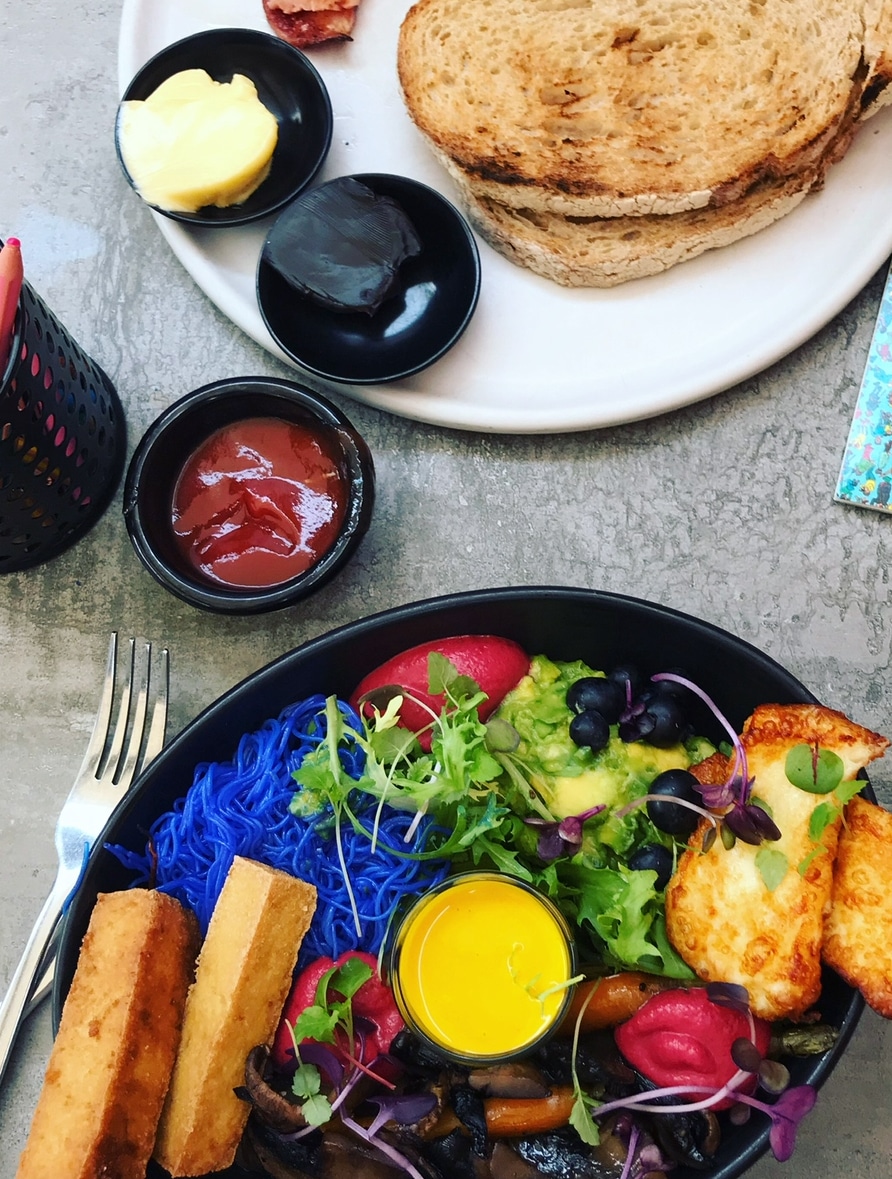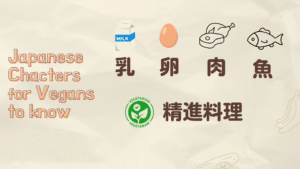
Vegan in Japan: 5 kanji to learn now
Alina is a vegan consultant and travel planner based in Tokyo. She has been living in Japan since 2015, and she has started her vegan journey shortly after that.
Due to her passion for the Japanese culture and for helping (especially vegan, but not only) travelers navigate Japan, she started Japan by Locals (https://japanbylocals.com/), a service dedicated to planning customized trips to Japan in an easy, convenient and affordable way.
You can find more travel and vegan travel tips on her Instagram page at @vege_li_tokyo.
Japan: a land of exquisite temples, tranquil gardens, and…a potential minefield for vegans.
While Buddhist influences have led to a long tradition of vegetarianism, nowadays, even restaurants serving ‘shojin ryori’ (traditional Buddhist cuisine meals), often include fish stock.
However, this is a good reason to learn some Japanese before you travel to Japan! Having even a little knowledge of the fascinating Japanese characters, kanji, will transform navigating the culinary scene as a vegan in Japan into a delightful adventure.
Whether you are trying to check a product label at a convenience store and figure if it’s vegan, or you’re looking at a restaurant menu, or trying to check if street food is vegan, knowing a few
basic characters will be great help.
Firstly, it is important to understand the food allergy labelling in Japan.
Even if you don’t have allergies, spotting allergen information can help identify if some animal-based ingredients are used (or not used) in certain products.
According to the Bureau of Public Health, there are eight items or ‘specific ingredients’ which. must be labelled (shrimp, crab, walnuts, wheat, soba, eggs, milk, and peanuts) as ‘a significant
number of people have severe allergic reaction and symptoms’ to them. An additional 20 items (almonds, abalone, squid, oranges, cashew nuts, kiwi fruit, beef, sesame, salmon, mackerel, soybeans, chicken, bananas, pork, matsutake mushrooms, peaches, yams, apples, gelatine) may be labelled, as well, whenever possible.
So even if you can’t read Japanese, looking for the following allergens, could be a good. indication if something is vegan or not:
乳製品 (nyūseihin) or sometimes marked simply as ‘乳’, on allergen labels – dairy products.Dairy finds its way into many desserts, bread etc.
卵 (tamago) – egg: Eggs are a common ingredient in tempura batter and other fried foods,dressings etc.
Not included in the 8 essential allergens specified by the Bureau of Public Health, but still important to know:
肉 (niku) – meat: Good to know for general awareness. The character is also used to form works such as 牛肉(beef) or 豚肉(pork) or 鶏肉 (chicken). However, sometimes it can be seen
in combinations such as ‚梅肉’, which means plum pulp.
魚 (sakana) – fish. You may often see 鰹 (katsuo), meaning the fish
And finally, no more animal products kanji, but one veggie friendly one:
精進料理 (shojin ryori) – traditional temple vegetarian food. You probably can see it more at
restaurants around traditional places such as Kyoto, or nearby temples, although it isn’t a guarantee that your meal is vegan-friendly.

Beyond the Characters
While kanji is a powerful tool, remember that there are still many traps in eating vegan in Japan, especially that veganism does not refer only to the exclusion of the 4 items above.
Other tools you can use for a more accurate translation include the Google Translate app – just take a photo of the ingredient list and you can see the translation.
I would strongly advise sticking with vegan friendly restaurants, instead of trying to get mainstream restaurants to cater for you.
Most restaurants usually do not have much options except for, maybe, some rice and edamame, and fries (if you’re lucky enough and they do not cook them in animal fat.)
The fastest way to find veggie restaurants nearby is to go on Google Maps and type in ‘vegan’ in the search bar, and the results will include hopefully some vegan friendly places.
There are other resources such as HappyCow and some printed vegan restaurant guides that you can get at tourist information centres in major cities.
Lastly, use my instagram account here if you want to explain to the staff somewhere that you are vegan, so they know what to serve you.
While I don’t generally recommend going to mainstream restaurants and asking for vegan options, this could still be a good tool in some other situations, and even if you ask mainstream restaurants for vegan food, you’re still helping to create demand for such dishes in Japan!
Armed with this newfound knowledge and a touch of adventurous spirit, you’re now ready to embark on a delicious exploration of Japanese vegan cuisine.
Itadakimasu! (“Let’s Eat!”) to a delightful vegan adventure in Japan!
Alina is a vegan consultant and travel planner based in Tokyo. She has been living in Japan since 2015, and she has started her vegan journey shortly after that.
Due to her passion for the Japanese culture and for helping (especially vegan, but not only) travelers navigate Japan, she started Japan by Locals (https://japanbylocals.com/), a service dedicated to planning customized trips to Japan in an easy, convenient and affordable way.
You can find more travel and vegan travel tips on her Instagram page at @vege_li_tokyo.




